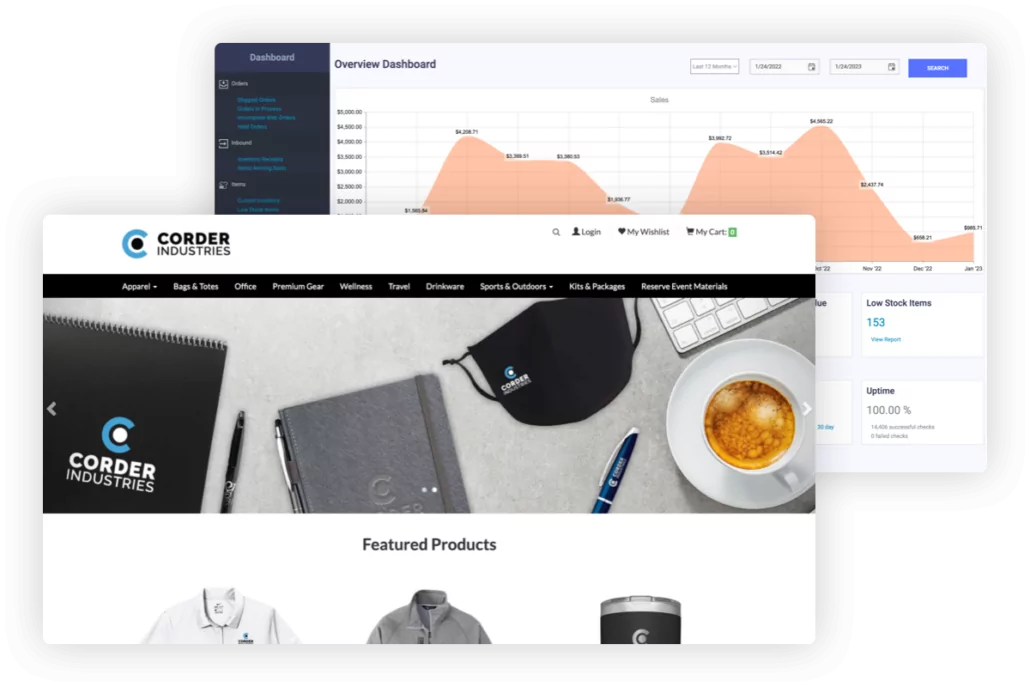Whether you’re trying to generate new sales, move closeout merchandise or do a little of both, promotion codes can be a highly effective tool for attracting buyers to your online shop. While it is true promo codes can backfire if not used wisely, you can easily avoid the pitfalls by sticking to promo code best practices that help ensure you’re offering a discount but still making a profit.

Promotion Code Options
Promotion codes typically allow for a variety of deals, ranging from percentage discounts on select items to a set dollar amount off the entire order.
Those available on our online store platform can be set using up to 10 alpha-numeric characters, with the following options available:
- Percentage discount on all items
- Percentage discount on certain items
- Flat dollar discount off order total
- Flat dollar discount off a particular item
- Free item on orders over $X
When to Use Them
You can use discount codes any time you wish, of course, although using them regularly on a set schedule can condition your shoppers to wait until you run the sure-to-come promotion before they buy anything. Here you’ve just created a customer base that will probably never pay full price. A more strategic choice is to use promo codes with a specific purpose in mind.
See Also: Gift Codes for Online Company Stores
Seasonal promotions: Promotions run during certain seasons can raise awareness of your shop during slow or busy seasons or specific holidays. These can also be useful for clearing out last season’s merchandise.
Launching a store: Get employees or other shoppers to place their first order at your newly launched shop with a discount on their first order.
Promoting a new category or item: Start the sales rolling on a new item or category of items with discounts on those select items.
Moving discontinued items: Those water bottles you’re no longer carrying? T-shirts that showcase last year’s design? Use promo codes on those select items to help move them out of your shop.
Encouraging shoppers to make bigger purchases: Pick an enticing free gift, then set up a promo code that rewards shoppers with the gift when they make a purchase of at least $100, $200 or $300.
Thanking customers: Include a special promo code in a thank you email sent to repeat or big-spending customers, offering a discount on their next order.
Rewarding winners: Run promotional contests on your social media sites, rewarding the winners with a discount code worthy of their efforts.
Testing marketing campaigns: Running a variety of campaigns with a different promo code linked to each campaign allows you to see which campaigns are netting the greatest results based on the promo codes being used. Use can also a specific promo code with a specific online ad you run to track of the effectiveness of that ad.
Celebrating fans: Creating different codes for your social media fans on Facebook, Twitter, Instagram and other sites can encourage them to keep sticking around to check out your social media feeds.
Turning new readers into customers: If you’re partnering with a blog or media outlet for a feature, or writing a guest blog or feature for a specific site, consider creating a promo code that can be used specifically for their readership.
Tips for Avoiding the Pitfalls
The biggest problem with promo codes is the risk of losing money, and that can happen when the codes are shared, re-shared, end up on coupon websites and never expire. Avoiding the pitfalls is possible with a few strategic tips.
Set an expiration date
Not only does setting an expiration date ensure your promo code can’t be used for years on end, but it also creates urgency with a set time limit for using the code.
Make sure your discounts are sustainable
While you want to consistently draw in business, you don’t want to consistently lose money while doing so. Make sure the discounts are high enough to generate interest but low enough to ensure you’re still making a profit.
Issue codes to select audiences
Instead of making promo codes readily available to be shared and re-shared across the web, consider sending them to specific, targeted shoppers. For instance, set up specific codes you share with employees, loyal customers, email list subscribers and other categories of shoppers. Send them the codes directly instead of posting them freely on your website.
Create, and measure goals
Increasing sales is a catch-all goal for any type of promotion, but you can fine tune your promo code strategy if you fine tune your goal. Figure out what you want the promo code to do. Draw in new customers? Encourage repeat or lost customers to come back? Increase sales during a slower season? Beat last year’s sales during a busy one? When possible, assign specific numbers to your specific goals. This lets you track your promo code’s progress, giving you insights into areas of the campaign that may need to be adjusted or further developed. One final note is to err on the side of caution when creating any type of promo code campaign. Before you break out the big guns and serve up a hefty discount, you may want to test the waters with a trail run that offers a smaller discount. This can give you an idea of the type of response you may receive, which allows you to adjust your promo strategy accordingly so you make money instead of lose it.


